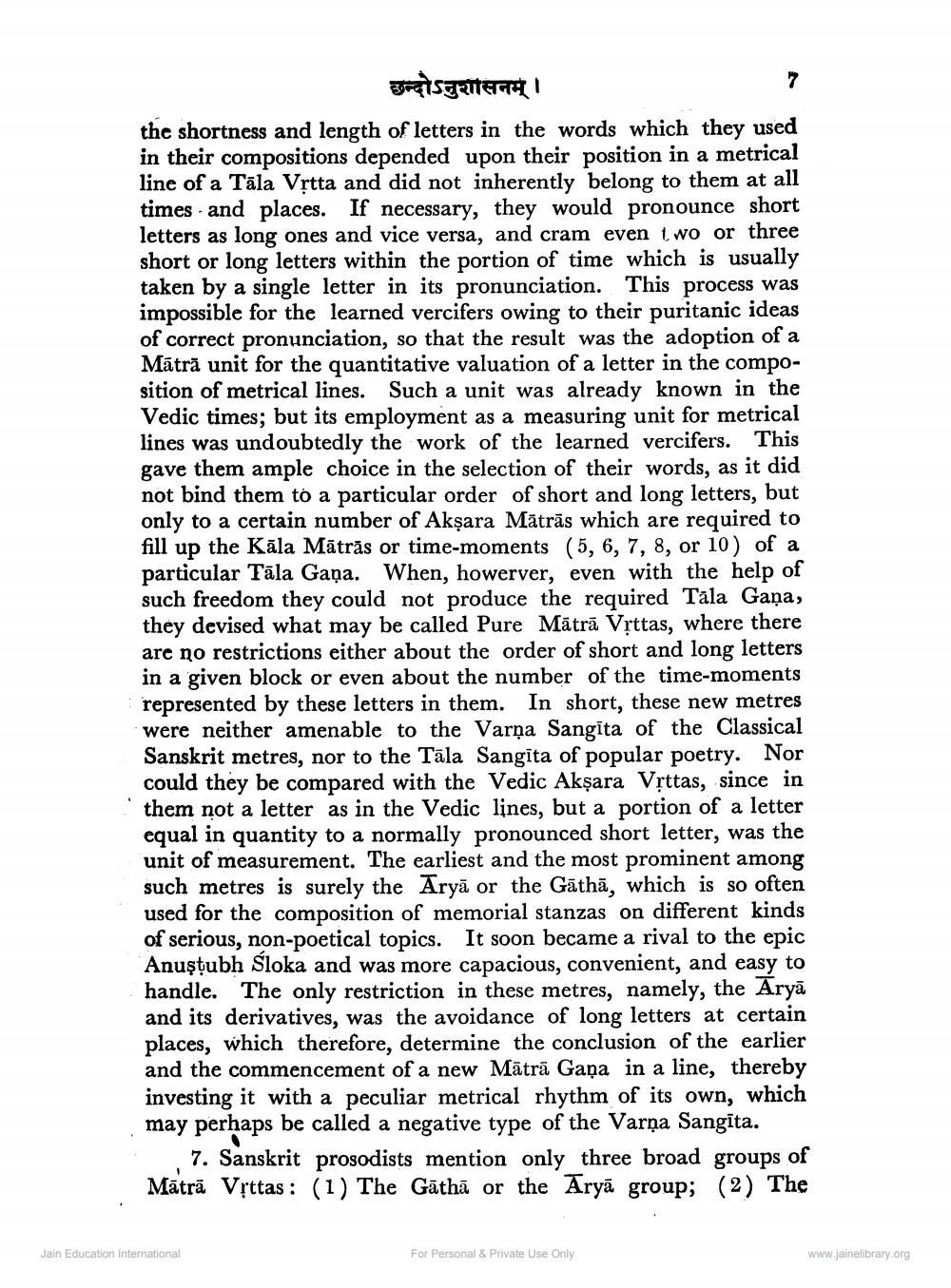________________
छन्दोऽनुशासनम् । the shortness and length of letters in the words which they used in their compositions depended upon their position in a metrical line of a Tāla Vrtta and did not inherently belong to them at all times and places. If necessary, they would pronounce short letters as long ones and vice versa, and cram even two or three short or long letters within the portion of time which is usually taken by a single letter in its pronunciation. This process was impossible for the learned vercifers owing to their puritanic ideas of correct pronunciation, so that the result was the adoption of a Mātrā unit for the quantitative valuation of a letter in the composition of metrical lines. Such a unit was already known in the Vedic times; but its employment as a measuring unit for metrical lines was undoubtedly the work of the learned vercifers. This gave them ample choice in the selection of their words, as it did not bind them to a particular order of short and long letters, but only to a certain number of Akşara Mātrās which are required to fill up the Kāla Mātrās or time-moments (5, 6, 7, 8, or 10) of a particular Tāla Gaņa. When, howerver, even with the help of such freedom they could not produce the required Tala Gaņa, they devised what may be called Pure Mātrā Vrttas, where there are no restrictions either about the order of short and long letters in a given block or even about the number of the time-moments represented by these letters in them. In short, these new metres were neither amenable to the Varņa Sangīta of the Classical Sanskrit metres, nor to the Tāla Sangita of popular poetry. Nor could they be compared with the Vedic Akşara Vrttas, since in them not a letter as in the Vedic lines, but a portion of a letter equal in quantity to a normally pronounced short letter, was the unit of measurement. The earliest and the most prominent among such metres is surely the Aryā or the Gāthā, which is so often used for the composition of memorial stanzas on different kinds of serious, non-poetical topics. It soon became a rival to the epic Anuştubh Sloka and was more capacious, convenient, and easy to handle. The only restriction in these metres, namely, the Aryā and its derivatives, was the avoidance of long letters at certain places, which therefore, determine the conclusion of the earlier and the commencement of a new Mātrā Gaņa in a line, thereby investing it with a peculiar metrical rhythm of its own, which may perhaps be called a negative type of the Varņa Sangīta.
7. Sanskrit prosodists mention only three broad groups of Mātrā Vittas : (1) The Gāthā or the Aryā group; (2) The
Jain Education International
For Personal & Private Use Only
www.jainelibrary.org




